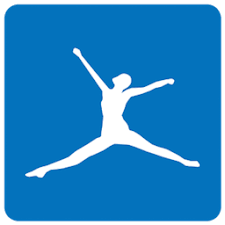MyFitnessPal is a multifunctional mobile app designed to support users in tracking nutrition, exercise, water intake, and body metrics. For fitness coaches, it provides a verified, data-rich environment that supports monitoring client habits, evaluating dietary compliance, and offering feedback outside of in-person sessions. The app includes evidence-based features that make it easier to maintain accountability and adjust coaching strategies in real time. This section outlines exactly what coaches can do using only official MyFitnessPal functionalities.

Key Functions of MyFitnessPal for Coaches
Below are the core functions available in MyFitnessPal that coaches can use to monitor client behavior and guide long-term progress. Each feature is part of the verified MyFitnessPal ecosystem and can be applied directly in daily coaching routines.
Monitoring Nutrition and Macronutrients
MyFitnessPal allows users to log food by searching a verified global database, scanning product barcodes, or using the voice logging feature. For coaches, this means every food entry is backed by reliable information, which enables meaningful evaluation of a client’s dietary habits.
- The Food Diary displays every logged meal, snack, and drink with full nutritional breakdown.
- Coaches can view macronutrient distribution (protein, carbs, fats) by gram or percentage for each day.
- Clients can also set calorie and macro targets, either using MyFitnessPal’s automated recommendations or through personalized input (Premium feature).
- The app’s weekly nutrition view summarizes trends, making it easier to assess consistency and spot areas for improvement.
Analyzing Habits and Long-Term Progress
Coaches can use MyFitnessPal’s built-in charts and summaries to analyze how client choices evolve over time. These visual tools offer insights that go beyond daily compliance.
- Weekly and monthly summaries display average intake, allowing for pattern recognition.
- The five-week weight projection tool shows potential progress based on current habits.
- By reviewing consistency streaks and check-in history, coaches can evaluate discipline and adherence levels.
- Water intake and exercise logging also provide complementary data to understand broader lifestyle habits.
Using the Real-Time Food Diary
The food diary is a central part of the app, functioning as a live record of what a client consumes throughout the day. When clients keep their diary sharing settings open, coaches can access this log without needing to request screenshots or summaries manually.
- Entries are timestamped, showing when meals were consumed.
- Each food or meal is broken down by serving size, nutrition facts, and source (scanned, searched, or custom).
- Meal scan (Premium) enables clients to log full meals visually, speeding up accuracy and ease of use.
- With real-time updates, coaches can check food logs before or during sessions to provide immediate feedback.

How to Integrate MyFitnessPal into a Coaching System
To use MyFitnessPal effectively in a coaching workflow, both coach and client need clear guidance. Coaches must first align app features with their programming structure, then help clients build consistent habits within the app. This section outlines how to do both efficiently.
What Coaches Should Set Up
Before assigning MyFitnessPal to clients, coaches should create a structured process for how tracking will support coaching decisions.
Define How the App Fits Your Workflow
Decide how often you will check the client’s logs daily, weekly, or before formal check-ins. Clarify whether you’ll track food only or include exercise and weight trends.
Set Diary Access and Communication Rules
Ask clients to enable diary sharing and choose either public access or password protection. Establish where communication will take place (e.g., inside the app, by email, or via your coaching platform).
Create Routine Check-in Points
Use the app’s weight projection and macro tracking tools to guide regular discussions. Encourage clients to review trends with you and reflect on weekly changes.
What Clients Need to Understand
Clients should know how to log consistently and avoid common mistakes that may reduce the accuracy of the data.
Common mistakes to avoid:
- Relying on exercise calories to justify extra food intake.
- Choosing outdated or unverified food entries from the database.
Helpful habits to encourage:
- Use the barcode scanner to log packaged foods and double-check labels.
- Update body weight and activity levels weekly to keep calorie goals accurate.
- Log meals in real time rather than at the end of the day for better consistency.
By simplifying the onboarding process and focusing on a few key habits, coaches can help clients use MyFitnessPal as an integrated, reliable tracking tool not just a logbook.

ReciMe for Coaches: Bring Structure and Simplicity to Client Meal Planning
Coaches often face a deeper challenge: helping clients decide what to eat and how to stick with a nutrition plan consistently. That’s where ReciMe comes in as a recipe and meal planning app designed to bring clarity, structure, and ease to the everyday food decisions your clients make.
Whether you’re building plans for weight loss, muscle gain, or maintenance, ReciMe helps your clients bridge the gap between macro targets and real-world meals.
How ReciMe Supports Coaching Workflows
ReciMe isn’t just for personal use – it also streamlines how coaches support clients with nutrition. From organizing meals to simplifying planning, here’s how it fits into professional workflows:
Organized Recipe Libraries
Customers can save recipes from Instagram, TikTok, Pinterest or upload their own, organize them into cookbooks and add tags by food type, cuisine or dietary goal.
Nutrition Breakdown Per Recipe
Each recipe displays estimated calories, protein, fat, and carbs per serving and total helping clients pick meals aligned with their macro targets.
Weekly Meal Planning Tools
Clients can build their weekly plans using saved recipes, reducing decision fatigue and improving compliance. You can even suggest a structure like “high-protein lunch” or “low-carb dinner” and clients can organize their meals accordingly using tags and custom cookbooks.
Auto-Generated Grocery Lists
ReciMe instantly turns meal plans into organized shopping lists, sorted by recipe or by grocery aisle. This makes preparation easier and eliminates friction from nutrition routines.
Seamless Access Across Devices
Available on iOS and as a Chrome extension, ReciMe lets clients plan meals and prep anytime, anywhere.
ReciMe isn’t a replacement for tracking tools, it’s the missing link between macro goals and everyday food decisions. For coaches, it means fewer “what should I eat?” messages. For clients, it means more structure, better preparation, and fewer excuses.
Just try it – you’ll love it:


Why MyFitnessPal Is a Practical and Effective Coaching Tool
The following benefits reflect verified capabilities of the MyFitnessPal app. Each advantage is rooted in the app’s built-in tracking, feedback, and reporting tools giving coaches better insight and control over client behavior and progress.
Ongoing Client Engagement without In-Person Contact
MyFitnessPal keeps coaches informed of client habits even when they are not training face-to-face.
- The app’s daily dashboard allows clients to log food, water, and workouts at any time. Coaches who have access to client diaries can check this data remotely.
- Real-time updates to the food diary mean coaches can view meals as they are logged, enabling midweek check-ins or immediate guidance if needed.
- Consistent engagement, supported by streak tracking and reminders, helps clients stay accountable to their goals outside of scheduled sessions.
Transparent and Objective Data for Evaluation
The reliability of MyFitnessPal lies in its structured, numeric tracking of calories, macronutrients, and micronutrients.
- The app calculates total calorie intake and breaks it down by day, meal, and food item.
- It displays macronutrient distribution in both grams and percentages helpful for coaches implementing specific meal targets.
- With over 20 million entries in the food database, including many verified items such as restaurant and packaged foods, coaches can generally trust the nutritional data clients are logging.
- Exercise and step tracking, along with water intake and body weight, give a broader perspective on behavior and overall health.
Flexibility to Adjust Plans Quickly
Having accurate client data allows coaches to make fast and meaningful changes to meal plans or activity goals.
- If a client is consistently falling short of protein goals, for example, this can be seen in the weekly nutrition report, and coaches can offer targeted recommendations.
- Adjustments can be made between sessions, avoiding the need to wait for in-person updates.
- When paired with features like the custom goals option (available in Premium), coaches can help clients modify their macro targets to align with changing objectives.
Built-In Tools That Support Motivation and Visual Progress
MyFitnessPal is designed to make progress visible, which has a strong psychological impact on user commitment.
- The app includes a five-week weight projection tool that shows what a client might weigh if current habits are maintained.
- Graphs and charts allow users to view weight loss, calorie consumption, and macro trends over time reinforcing consistency and effort.
- Clients earn logging streaks and positive feedback within the app, reinforcing a sense of achievement and structure.
- For many users, simply seeing their progress visually is enough to stay on track between coaching sessions.
Each of these verified benefits contributes to a coaching system that is more dynamic, data-informed, and responsive. By using MyFitnessPal, coaches not only extend their reach beyond the gym or session, but also empower clients to become more engaged in their own health outcomes.

Limitations and Risks Coaches Should Consider
While MyFitnessPal offers powerful tools for tracking and behavior analysis, coaches should be aware of several limitations that can affect data quality, client perception, or overall coaching effectiveness. Understanding these constraints helps guide responsible use of the app within structured programs.
Potential Drawbacks of Using MyFitnessPal in Coaching
Each point below is based on verified functionality and known issues within the app. Coaches can mitigate these risks through clear instruction and regular oversight.
Automatic Addition of Exercise Calories
When clients log workouts, MyFitnessPal adds those calories to their daily food allowance. This may lead to unintentional overeating, especially in weight loss programs. Coaches should clarify that these added calories are informational, not permission to exceed the plan.
Inaccuracies in User-Generated Food Entries
The app’s database includes unverified, community-created items that may be outdated or incorrect. Encourage clients to use verified entries (marked with a green check) and cross-check nutrition labels.
Overfocus on Numbers
Clients may become preoccupied with hitting calorie or macro targets, losing sight of food quality. Coaches should reinforce a balanced approach emphasizing consistency and overall nutrition rather than daily perfection.
Risk of Stress in Sensitive Clients
Detailed tracking can trigger anxiety or guilt in clients with a history of disordered eating. In such cases, coaches should consider alternative methods, such as simplified tracking or qualitative feedback.
Time Investment for Beginners
New users may find manual logging overwhelming. Coaches can ease the process by recommending tools like barcode scanning, meal history, or templates to reduce friction.
These risks do not negate the app’s value, but they do require informed use. Coaches who communicate clearly, personalize their approach, and monitor client responses can ensure that MyFitnessPal remains a supportive tool not a source of confusion or pressure.
Premium Features in MyFitnessPal: What Coaches Should Know
MyFitnessPal offers a free version with core tracking features as well as a Premium subscription with expanded capabilities. While the free version is fully functional for general use, the Premium version unlocks advanced tools that may be particularly beneficial in structured coaching environments. This section provides an overview of when and why a coach might recommend the Premium upgrade, based strictly on official, verified features as described by MyFitnessPal.
Key Differences Between Free and Premium Versions
Both versions allow for accurate food logging, calorie tracking, and weight monitoring. However, Premium introduces customizations and automation that enhance usability and precision, especially for clients with advanced or specific goals.
When Premium is Especially Useful
The Premium version includes several features that give coaches and clients more control over nutrition plans and performance monitoring.
- Custom Macro Goals by Gram or Percentage: Unlike the free version, which only offers fixed macro targets based on initial profile data, Premium allows clients to set exact macro goals tailored to the coach’s program, for example, adjusting protein intake on strength training days.
- Meal-Level Calorie and Macro Goals: Coaches can help clients split targets across meals to better structure their eating habits. This is useful for protocols like nutrient timing or small frequent meals.
- Intermittent Fasting Tracker: MyFitnessPal Premium includes a fasting tracker that logs eating windows and fasting periods. Coaches working with clients on time-restricted eating can monitor consistency using this feature. Note: While this tool supports structured fasting routines, it is not a medical feature and should be used with professional guidance if clients have health conditions or a history of disordered eating.
- Custom Dashboards and Data Views: Clients can personalize their app home screen to display the most relevant metrics such as protein intake or net carbs which improves focus and daily awareness.
- Detailed Nutrient Analysis: Premium users gain access to expanded micronutrient tracking (e.g., vitamin C, magnesium, potassium), which is valuable in long-term health-focused coaching.
When Premium Is Not Essential
For many coaching situations, especially when the goal is general weight loss or simple food awareness, the free version of MyFitnessPal is sufficient.
- It supports basic calorie counting, macro breakdowns, exercise logging, and weight tracking.
- Coaches can still review the food diary, water intake, and general progress without needing Premium.
In summary, MyFitnessPal Premium is not necessary for every client, but it provides valuable tools for those engaged in structured, data-driven coaching. Coaches should recommend it selectively, considering the client’s goals, level of commitment, and need for customization.
Conclusion
MyFitnessPal is a valuable, data-driven tool that empowers coaches to guide their clients more effectively in reaching their nutrition and fitness goals. By offering verified tracking features for food, macros, water, weight, and exercise, the app creates a reliable foundation for real-time monitoring and informed decision-making. Coaches can use this platform not just to observe progress, but to intervene early, adjust plans as needed, and reinforce positive behaviors based on transparent, measurable data.
For fitness professionals, understanding how to integrate MyFitnessPal into a coaching system unlocks new levels of personalization and efficiency. Whether working in person or remotely, coaches can extend their support beyond sessions through features designed to promote engagement and accountability. As client goals become more specialized, tools like custom macro targets and detailed nutrition analytics especially within the Premium version can further enhance outcomes. Mastering the functionality of MyFitnessPal ensures that coaches stay aligned with modern, evidence-based practices in nutrition and habit change.
FAQ
What is the main advantage of using MyFitnessPal as a coach?
The main advantage is having access to verified, real-time data on a client’s food intake, activity, and progress. This allows coaches to make informed adjustments, track consistency, and stay connected to the client’s behavior between sessions, increasing the effectiveness of long-term coaching strategies.
Can a coach see everything a client logs in MyFitnessPal?
Coaches can view a client’s food diary only if the client shares access through the app’s diary sharing settings. While personal metrics like weight and goals remain private by default, logged food, water, and exercise data can be reviewed when shared, allowing the coach to monitor progress without manual reporting.
How accurate is the food database in MyFitnessPal?
MyFitnessPal’s food database is one of the largest globally, with over 20 million items. While many entries are verified by the app, others are user-submitted and may contain errors. Coaches should instruct clients to use verified entries and double-check labels to ensure accurate tracking and reporting.
What common mistakes should clients avoid when using MyFitnessPal?
Clients often rely too heavily on exercise calories added to their daily allowance or choose unverified food entries. These practices can lead to overeating or misreporting. Coaches should explain how to interpret app-generated values correctly and promote habits like scanning food barcodes and updating body weight regularly.
How can a coach help a client stay consistent with tracking?
Coaches can set reminders, check in regularly, and educate clients on how to use features like barcode scanning and meal templates. By simplifying the process and reinforcing progress visually, MyFitnessPal becomes less of a task and more of a habit, increasing long-term adherence and clarity in communication.
